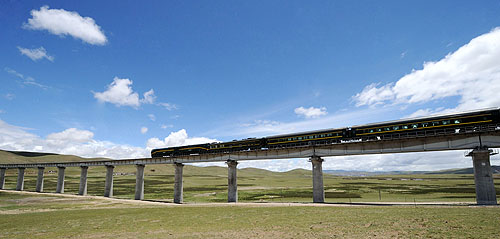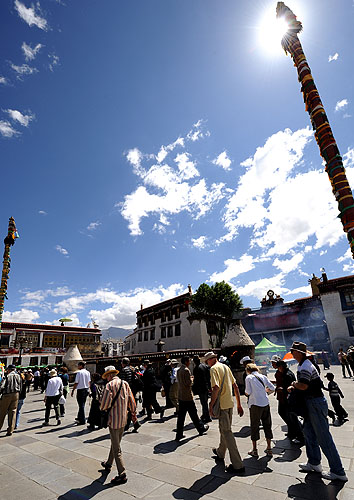|
|
 |
|
MONEY TRAIN: A train running on the Qinghai-Tibet Railway. The link, operating for three years, has brought considerable development to Tibet's economy (JUE GUO) |
The Qinghai-Tibet Railway, the 1,956-km transportation link that began operations over the "roof of the world" in 2006, made it through severe tests to its third anniversary on July 1.
The link is the world's longest plateau railroad, which goes from Qinghai's provincial capital of Xining to Lhasa, Tibet. It was the first railway to connect central Tibet to the outside world, running through the Qinghai Lake, Kunlun Mountain, Hoh Xil and the northern Tibetan grasslands. Qinghai's Golmud to Lhasa section zigzags 1,142 km across the Kunlun and Tanggula mountain ranges. About 550 km of the tracks run over frozen earth, the longest of all the world's plateau railways.
|
 |
|
HOLY PALACE: Tourists visit Lhasa's Jokhang Temple. Tibet welcomed more than 720,000 tourists from January to May 2009 (KELSANG DAWA) | The railway is a highly symbolic part of China's western development strategy. Its completion and operation has changed the social and economic landscape of the autonomous region by greatly promoting the region's development.
Change of concept
With plenty of natural and cultural scenery, the region is also preparing to tap great business opportunities, including Tibetan medicine and processing farm and pasture products.
"Since the opening of the Qinghai-Tibet Railway, the thoughts of local herdsmen have appeared to gradually change," said Tinley Norbu, a Nagqu government official. More and more local herdsmen today have dropped their traditional living styles and started doing business.
|
